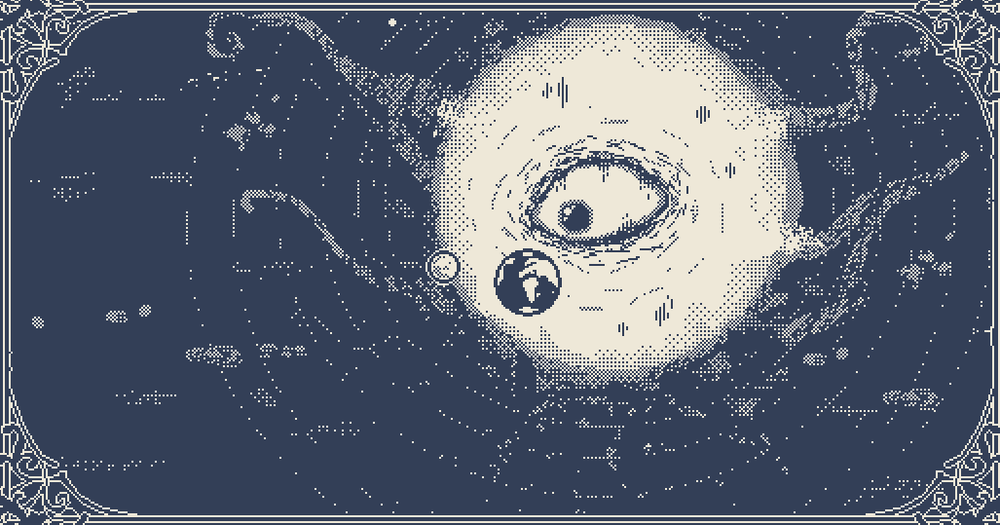
When thinking of indie games, some famous examples include Hello Game’s No Man’s Sky in it’s beautiful polygonal rendering, Toby Fox’s Undertale, made in 32-bit sprites, or Yacht Club Game’s hit Shovel knight, taking away from NES-era platforms and being comprised of 8-bit graphics. But, how deeper can we get? I present to you: World of Horror, a rogue-like story driven game that allows to be played in either an impressive 2-bit or 1-bit display setting.
Set in the town of Shiokawa, Japan, World of Horror combines the art of Junji Ito (a manga artist famous for his very unsettling art style) mashed up with a Lovecraftian-inspired mythos. The game has you race the clock against the impending return of various Elder Gods while solving several mysterious, often gruesome, cases (ranging from saving your neighbour from parasitic eels by poking their eye out with a needle to attending a ceremony and sacrificing people in order to bring your uncle back to life). What is most impressive about this game is that it is made by one guy, who creates the game’s sprites in MSPaint! It shows that an interesting game can not only be made with very limited resources, but also that this game can gain some form of success and attraction, with an estimated sales number ranging from 50,000 to 100,000 copies.

However, this is not the only one man wonder that gained some interest. Although currently consisting of two people, Kintec Games’ viral hit Phasmophobia started off as a one person unity (a game engine which is in/famous for its ease of use) project, currently sporting over 50,000 players playing as of the moment writing and an estimated two million buyers. The game is relatively cryptic insofar that the tutorial isn’t particularly helpful, but the gist is this: you (and up to three friends, the more is really the merrier in this case) are a ghost hunter, travelling to different locations where you try to figure out where the ghost is, and what. Through classic ghost hunter tools such as an EMF reader (with which you could measure electronic waves) or a spirit box (a radio which rapidly switches stations in order to be the ‘voice’ for a ghost) you come closer to the truth of what you ghost is, monitoring it’s behaviour in order to get an ever better idea; or you don’t. Sometimes your cousin decides that in the middle of the entry room is the best place to hide and dies, to hilarious effect.
What these games show is that they don’t need a triple-A budged in order to be successful and enjoyable, and that someone doesn’t need a great team in order to make a game. Indie games in general can have a wide range of succes, though it is also important to be cautious. Their success may also be up to chance, whichever game gets picked up by a Youtuber or Twitch streamer can expect a increase in clout (especially when played by a larger group of streamers who can combine their audience), although nowadays through a mingling of online and offline spheres (such as AOC’s recent foray into the streaming) the clout can also be a growing snowball of small streamers elevating games which get noticed by larger streamers. Above all i think it’s important that these games do not represent large franchises designed for profit, instead they are made by enthousiasts who wish to create something they themselves are interested in.


Recent Comments